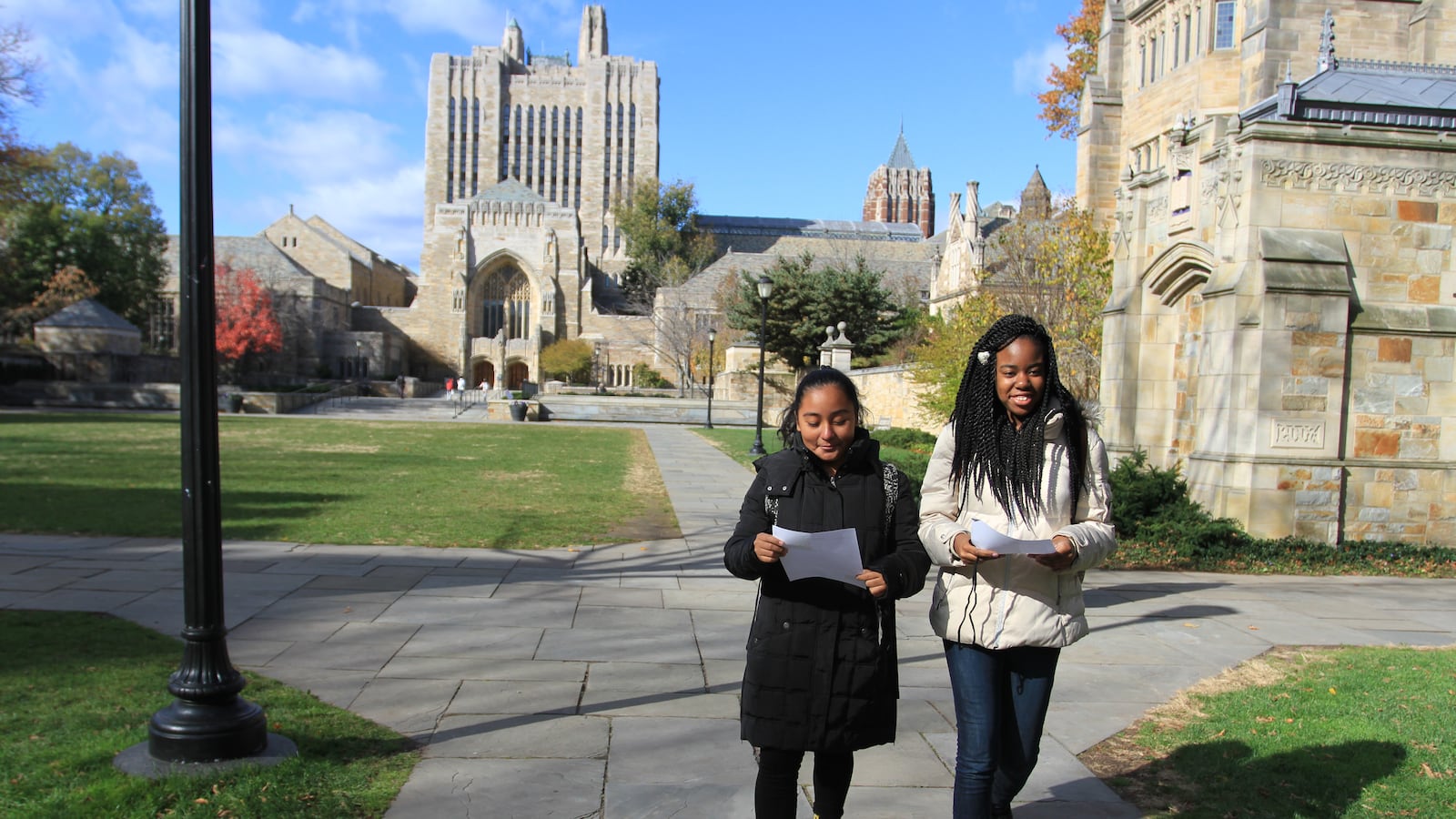Thousands of New York City high school seniors graduated last month, but only time will tell how many of them are truly ready for college.
If last year is any indication, about half of the graduates are “college ready,” according to the city’s definition. But StudentsFirstNY, in a report released last week, argues the city should focus on a metric that includes students who don’t make it to graduation, which would knock the citywide rate down to just over one third.
Neither measure is wrong. But the gap underscores an important point: It is extremely difficult to nail down how many students are ready for college — and increasingly important for the city to do so.
“[College-readiness] becomes really the standard by which high schools are being measured, so I think it’s going to become a much bigger part of the conversation,” said James Kemple, executive director of the Research Alliance for New York City Schools, a nonpartisan center based at New York University. “A high school diploma as a terminal degree is a thing of the past.”
Mayor Bill de Blasio has staked out a goal of having two-thirds of graduates be “college ready,” and laid out an education agenda that includes a focus on algebra, college visits, and individual student counseling in order to accomplish that goal.
It makes sense that the city would focus on college-readiness right now. The city is graduating more students than ever — the graduation rate reached 70 percent this year, up 24 points since 2005. But that only invites the question: What are those students prepared to do?
The city uses a metric meant to judge whether students could avoid taking remedial classes at CUNY. It’s based on Regents exam scores, SAT or ACT scores, and CUNY placement exams and was created in collaboration with CUNY.
The metric doesn’t capture all the factors that determine whether a student will succeed in college, but it represents something high schools can measure and influence, so it’s logical for the education department to track it, CUNY officials said. Also, students in remedial classes complete degrees at less than half the rate of those not in remedial classes.
Yet some critics argue that test scores are not the best way to judge whether students are ready for college. Studies show that a student’s GPA is often a better predictor of success in college than his or her SAT scores, for example, though GPA isn’t standardized across schools.
Meanwhile, groups like StudentsFirstNY believe a metric that counts only graduates, rather than all students who start in ninth grade, artificially inflates the numbers. (The city computes both metrics, but the mayor’s goals are based on graduates.)
If the city wants to examine how well the system is preparing all students for college, it should start with ninth-graders, said Michael Cohen, president of the nonprofit Achieve, which helps states work on academic standards and tests.
“If you just look at the graduates, it’s an inaccurate picture of the system’s performance,” Cohen said.
The most significant critique may be that the metric only sets a minimal bar for academic readiness, and can’t fully predict whether students will actually finish college. Only 22 percent of students graduate with an associate’s degree from CUNY in four years.
Experts say there are a host of social, emotional and financial reasons students sink or swim in college.
“When you talk about the city’s college-readiness index, it would be a mistake for people to think that that is the only measure of college-readiness,” said Gregg Betheil, the president of PENCIL, an organization that helps to connect the business community and public schools. “It’s important for everybody to keep in mind that transitioning takes more than the academic bar.”
In the end, the city must have some way to determine whether enough students are leaving high school prepared for college, said Laura Zingmond, a senior editor at the school-review website Insideschools, who is skeptical that Regents exams are the most reliable tool.
“The practical matter is you have to set a metric,” Zingmond said.
Clarification: This story has been updated to clarify earlier that the city computes a college-readiness metric that includes high school dropouts, but the mayor’s goals are based on graduates.

